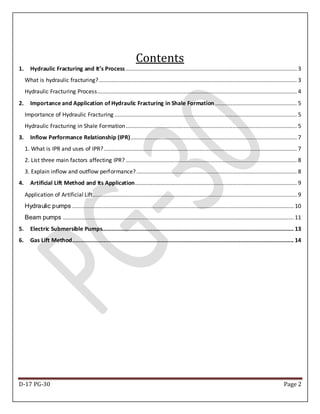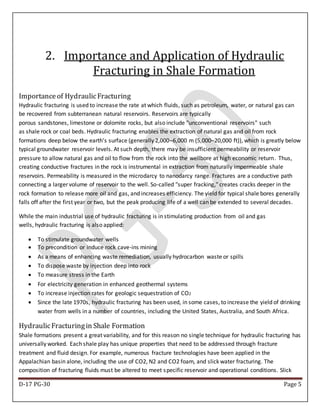The document is a practical manual for production engineering focusing on hydraulic fracturing, its process, and applications in shale formations. It covers the importance of hydraulic fracturing in increasing oil and gas recovery, details the inflow performance relationship, and explores artificial lift methods used to enhance production. Additionally, it discusses various techniques and technologies used in hydraulic fracturing, including equipment, methods of fluid injection, and the dynamics of fracture formation.













